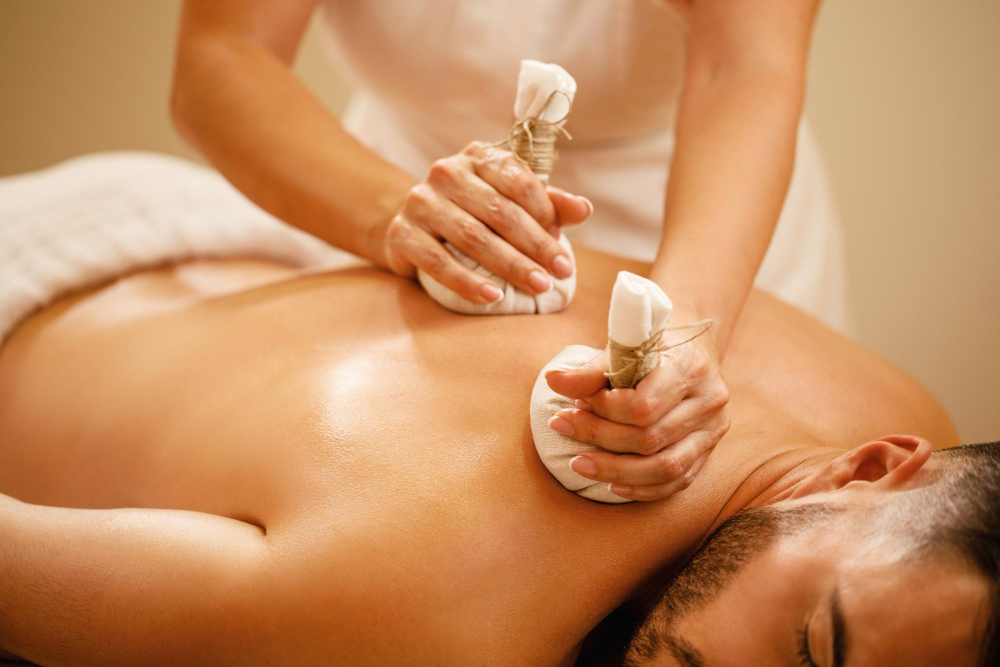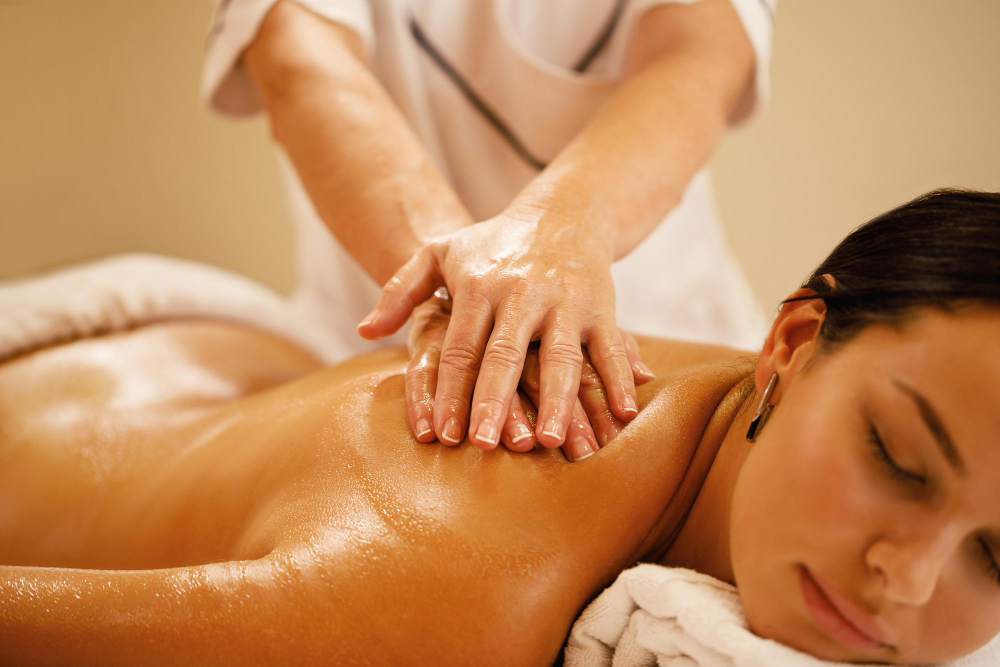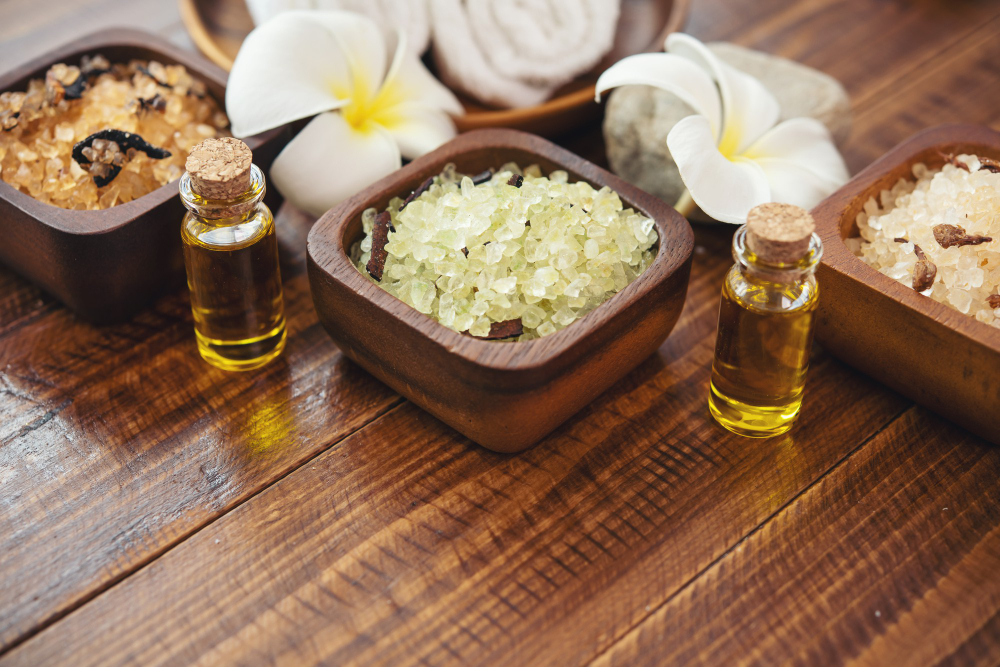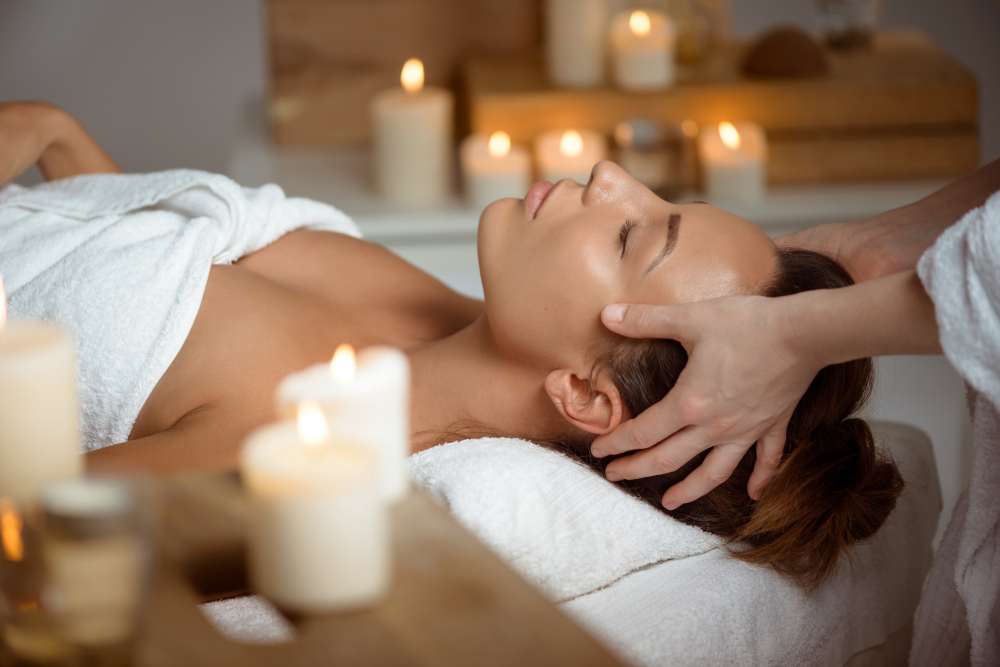
In the fast-paced world we live in, finding some peace and quiet is essential for maintaining a balanced and healthy life. An Ayurvedic massage, an ancient healing tradition rooted in Indian culture, offers a holistic approach to well-being. This therapeutic practice not only relaxes the body but also rejuvenates the mind and soul. In this blog, we delve into the intricacies of Ayurvedic massage, exploring its techniques, and benefits, and dispelling common myths surrounding this age-old practice.
What is an Ayurvedic Massage?
Ayurvedic massage, also known as Abhyanga, is a traditional healing practice that originated in India over 5,000 years ago. Rooted in the principles of Ayurveda, the ancient Indian system of medicine, this massage technique aims to balance the body’s energy and promote overall well-being. Ayurvedic massage combines the use of specific oils, rhythmic strokes, and targeted pressure points to stimulate the body’s natural healing abilities.
How Is Ayurvedic Massage Different From Other Kinds of Massage?
Unlike other massage therapies that focus solely on muscle relaxation, Ayurvedic massage therapy takes a comprehensive approach by addressing the balance of the three doshas—Vata, Pitta, and Kapha. Each person is believed to have a unique constitution, and Ayurvedic massage is tailored to individual needs, considering factors such as body type, lifestyle, and overall health.
How Are Ayurvedic Massages Performed?

The massage begins with the application of warm, herb-infused oils chosen based on the individual’s dosha. Therapists use long, flowing strokes and rhythmic movements to stimulate energy flow and release tension. Specific attention is paid to Marma points, which are vital energy centres in the body. The massage is performed with both soothing and invigorating strokes, creating a harmonious balance.
Bodycrafts’ Traditional Indian Massage is based on the same principle. It is an ancient healing technique based on the application of pressure along the energy lines of the body that stimulates the energy flow and eases muscle tension. Get in touch with our team to learn more about the types of massages at Bodycraft Salon.
Debunking the Myths Related to Ayurvedic Massage
Amidst the number of therapeutic benefits of Ayurvedic massages, there is a web of myths that create many misconceptions. Here are a few common myths about these massages that we are going to debunk.
- Myth: Ayurvedic Massage is a one-time solution.
Reality: While a single session can offer immediate benefits, Ayurvedic Massage is most effective when incorporated into a regular wellness routine for sustained well-being.
- Myth: It’s only for people with health issues.
Reality: Ayurvedic Massage is suitable for individuals of all health statuses, providing preventive benefits by maintaining balance and promoting overall wellness.
- Myth: Ayurvedic Massage has no scientific basis.
Reality: Ayurveda, including Ayurvedic Massage, is grounded in ancient Indian knowledge and has gained recognition for its holistic approach. Scientific studies have supported its effectiveness in promoting physical and mental well-being.
- Myth: Ayurvedic Massage is the same as any other oil massage.
Reality: Ayurvedic Massage involves specific techniques, personalised oil blends, and an understanding of individual doshas, setting it apart from generic oil massages.
- Myth: Ayurvedic Massage is a quick fix.
Reality: While it can provide immediate relief, the true benefits of Ayurvedic Massage therapy unfold over time as the body responds to the holistic healing approach, addressing root causes rather than just symptoms.
Types of Ayurvedic Massage

Ever heard of Ayurvedic massages and felt a bit puzzled by their fancy names? We’re going to simplify things and explain the different types of Ayurvedic massages.
1. Abhyanga: The Nurturing Touch
Abhyanga is perhaps the most well-known Ayurvedic massage, involving the application of warm herbal oils on the entire body. This gentle, rhythmic massage not only nourishes the skin but also promotes relaxation, enhances blood circulation, and helps eliminate toxins. The choice of oils is often personalized according to an individual’s dosha (body type).
2. Shirodhara: Tranquillising the Mind
Shirodhara is a unique Ayurvedic massage therapy where a continuous stream of warm herbal oil is poured onto the forehead (the ‘third eye’ region). This soothing technique aims to calm the nervous system, alleviate stress, and induce a profound state of mental relaxation. Shirodhara is particularly beneficial for those seeking relief from anxiety, insomnia, and mental fatigue.
3. Pinda Sweda: Herbal Bolus Massage
Pinda Sweda involves the use of herbal boluses (bundles) that are heated and applied to specific areas of the body. This massage is highly effective for reducing inflammation, relieving joint pain, and promoting muscle relaxation. Pinda Sweda is often recommended for conditions like arthritis and muscular stiffness.
4. Udvartana: Revitalising Body Scrub
Udvartana is an invigorating Ayurvedic massage that uses a special herbal powder or paste to exfoliate the skin. This technique not only helps in removing dead skin cells but also stimulates lymphatic drainage and improves blood circulation. Udvartana is often recommended for those looking to enhance skin texture, promote weight loss, and reduce cellulite.
5. Marma Massage: Energy Point Stimulation
Marma points are vital energy centers in the body, similar to acupressure points. A Marma massage involves gentle pressure on these points to release blocked energy and promote the flow of vital life force (prana). This type of massage not only rejuvenates the body but also balances the doshas and enhances overall well-being.
6. Kati Basti: Back Therapy
Kati Basti focuses on the lower back region, using a dam made of dough to hold warm herbal oil in place. This Ayurvedic massage is particularly beneficial for relieving lower back pain, sciatica, and issues related to the spine. Kati Basti helps nourish the affected area, reduce inflammation, and improve flexibility.
Benefits of Ayurvedic Massages

These therapeutic massages not only alleviate physical tension but also promote balance and rejuvenation, contributing to overall health and vitality.
- Relaxation: Ayurvedic massage, or Abhyanga, induces a deep sense of relaxation by calming the nervous system, reducing stress, and alleviating anxiety.
- Improved Circulation: This massage technique enhances blood circulation throughout the body, facilitating the efficient removal of toxins from the system.
- Muscle Tension Relief: Abhyanga helps alleviate muscle tension, promoting a more relaxed and supple muscular state.
- Joint Flexibility: Regular sessions contribute to improved joint flexibility by lubricating the joints and enhancing overall mobility.
- Stress Reduction: The massage has a profound impact on stress reduction, providing a holistic approach to mental well-being.
- Toxin Elimination: Through improved circulation and lymphatic drainage, Ayurvedic massage aids in the effective elimination of toxins from the body.
- Enhanced Skin Health: This practice nourishes the skin, leaving it healthier and more vibrant, while also assisting in the removal of dead skin cells.
- Balancing Energy: Abhyanga is believed to balance the body’s energy, promoting a harmonious flow of vital life forces.
- Improved Sleep: Regular sessions may contribute to better sleep quality by reducing stress and promoting relaxation.
- Holistic Well-being: Ayurvedic massage supports overall well-being by addressing physical, mental, and emotional aspects, fostering a balanced and rejuvenated state.
Takeaway
Ayurvedic massages offer a rich tapestry of therapeutic techniques designed to harmonise the body, mind, and spirit. Whether you seek relaxation, relief from specific ailments, or a holistic approach to well-being, exploring the diverse types of Ayurvedic massages can lead you on a transformative journey towards balance and vitality.
FAQs Around Ayurvedic Massage
1.Who is not eligible for the treatment?
Ayurvedic massage may not be suitable for individuals with certain medical conditions or specific health concerns. People who are not eligible for the treatment include those with acute fever, contagious skin diseases, severe cardiac issues, infectious diseases, advanced stages of cancer, and women in their first trimester of pregnancy. It is always advisable to consult with a qualified Ayurvedic practitioner or healthcare professional to determine eligibility based on individual health conditions.
2. What is the cost of an Ayurvedic massage per session in India?
The cost of an Ayurvedic massage session in India can vary widely depending on factors such as the location, the expertise of the therapist, the type of Ayurvedic massage offered, and the facilities provided by the wellness centre or spa. On average, the cost may range from ₹1,000 to ₹3,000 or more per session. Prices can be higher in metropolitan areas or at upscale wellness centres.
3. What are the alternatives to the treatment?
Alternatives to Ayurvedic massage for promoting relaxation and wellness include other types of massages like Swedish massage, deep tissue massage, aromatherapy massage, and reflexology. Additionally, individuals seeking holistic well-being may explore practices such as yoga, meditation, acupuncture, or traditional Chinese medicine. It is important to choose an alternative that aligns with individual preferences and health goals.
4. Is Ayurvedic Massage good for back pain?
Ayurvedic massage, especially with specific herbal oils and techniques, is often considered beneficial for relieving back pain. The massage helps in improving blood circulation, reducing muscle tension, and promoting relaxation. However, it is crucial to consult with an Ayurvedic practitioner or healthcare professional to assess the specific cause of back pain and determine the most appropriate treatment plan, which may include Ayurvedic massage as part of a holistic approach.
5. Are there any side effects of Ayurvedic massage?
Ayurvedic massage, when performed by trained and qualified practitioners, is generally safe. However, individuals may experience mild side effects such as temporary soreness, redness, or skin irritation, especially if they have sensitive skin or allergies to specific oils used in the massage. To minimise risks, it is important to inform the therapist about any existing health conditions or allergies. Pregnant women, individuals with certain medical conditions, or those with skin issues should consult with a healthcare professional before undergoing Ayurvedic massage.
FAQ’s –